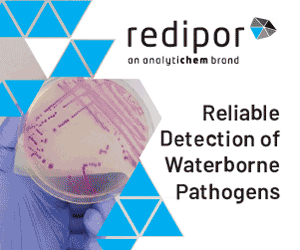- Klebsiella pneumoniae is a common cause of hospital-acquired infections and an opportunistic pathogen in humans that causes pneumonia, sepsis, UTIs, and abscess, and in rare instances, eye infections, meningitis, and osteomyelitis. There is growing concern for its antibiotic resistance, including resistance to carbapenems.2
- Zaborskytė et al.1 combined genetic and phenotypic analyses to show how K. pneumoniae virulence traits - capsule, iron scavenging, and biofilm formation—adapt over time within the human host and hospital environment, without major changes to multidrug-resistance (MDR).
- Understanding this within-host evolution highlights how MDR pathogens persist, evolve, and complicate infection control in clinical settings.
Key findings: Zaborskytė et al.1 retrospectively tracked 110 isolates of a single multidrug-resistant Klebsiella pneumoniae clone from 110 patients that spread directly and indirectly via patient-to-patient transmission over a 5-year nosocomial (hospital) outbreak in Sweden. The isolates were collected from patients during asymptomatic GI colonization (N =42) and opportunistic infection (N =68) involving urine, wounds, blood, and lung. Epidemiologic investigations revealed that the spread at the hospital occurred via direct and indirect patient-to-patient transmission. The authors combined comparative genomics with detailed phenotypic assays for mucoviscosity, serum survival (complement evasion), iron utilization, biofilm formation, and infection potential using an invertebrate model. The authors noted:
- Parallel / convergent evolution within hosts where independent mutations in the same genes/functions across patients indicate multiple “evolutionary routes” converging on similar adaptations.
- Multidrug resistance: Core MDR plasmids and resistance genes remained largely stable; some isolates acquired additional mutations or plasmid variants modifying the antibiotic resistance spectra.
- Change in virulence over time, where the outbreak clone repeatedly underwent:
- Reduced acute virulence via changes in iron uptake regulation and capsule/LPS loci, resulting in lower lethality in an acute infection model.
- Enhanced biofilm formation, promoting persistence and chronic colonization.
- Many of the changes were consistent with adaptation to “inside the hospital” / “inside patients,” especially for urinary tract or bloodstream infections.
Bigger picture: A recent CDC study reports on the emergence of hypervirulent and carbapenem-resistant K. pneumoniae strains in the U.S. which are genetically similar to global strains.3 Such strains pose particular public health concerns due to significant mortality. While less concerning, the non-hypervirulent clone described in this outbreak encodes broad resistance to β-lactams, aminoglycosides, tetracyclines, trimethoprim, sulfonamides, macrolides, quaternary ammonium compounds, and heavy metals. Clonal hospital outbreaks like this allow precise analysis of within-host evolution due to shared genetic origin, high sampling density, and defined time frames. Accordingly the study by Zaborskytė et al. provides strong evidence of how MDR pathogens persist, evolve, and challenge infection control in hospitals.
References:
- Zaborskytė et al. (2025). Parallel within-host evolution alters virulence factors in an opportunistic Klebsiella pneumoniae during a hospital outbreak. Nature Communications. Vol. 16, Article No. 8727.
- Center for Disease Control and Prevention (CDC). About Klebsiella. Accessed on Oct 9, 2025.
- Jiang et al. (2025). Carbapenem-Resistant, Virulence Plasmid-Harboring Klebsiella pneumoniae, United States. Emerging Infectious Diseases. Vol. 31, Issue, apges 761-771.
(Image Credit: iStock/wildpixel)
























